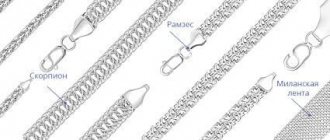It is believed that every Orthodox Christian should constantly wear a cross. For the first time, a symbol of spiritual faith is put on a person at the moment of performing the rite of baptism, when he renounces everything sinful and nasty. From this moment on, the cross becomes a person’s constant companion. It’s like a prayer without words that helps you move through life and protects you from troubles. Is it possible to remove a pectoral cross and what will happen if it gets lost? We’ll tell you today.
When can you remove the cross?
In the life of every Christian there are situations when it is necessary to remove the cross: during sports games, in the sauna, or at a doctor’s appointment. For such a case, some people have a special wooden cross, consecrated in the church, which will not cause harm in the sauna and will not be placed during medical procedures. But what should those who do not have such a replacement do?
You can remove the cross, but it is advisable to put it closer to the body, for example, in a trouser pocket equipped with a zipper. By the way, this is exactly what some athletes do before competitions.
After the event, which involved the removal of the pectoral cross, the shrine should be returned to its place as quickly as possible. You should not leave yourself from such powerful protection and patronage.
READ ALSO: Why unplug electrical appliances
What not to do in the bathhouse so as not to anger the owner
It was forbidden to make noise, stomp, shout loudly or swear in the steam room. The bannik could punish such behavior by scalding with boiling water and tripping him on the wet floor. And the worst violators could be steamed to death.
From midnight until the first rooster crow, the steam room belonged only to the bathhouse. Using it at this time is life-threatening. Also, there is a belief that you cannot visit the bathhouse on Mondays - this is the day of the owner of the steam room. If the ban is violated, the hair will grow slowly. The best days of the week for washing were Tuesday, Thursday and Saturday. At this time, the bannik watched for evil spirits that could harm those washing. In the steam room, according to signs, it is forbidden to spit, especially on stones. Otherwise, the owner will respond and spit boiling water. You cannot spend the night in the bathhouse, because evil spirits come to visit the zealous bathhouse owner. If you stay overnight, you may not wake up at all.
In order for the bannik to be satisfied, the room must be kept clean. And also, once a month, gift the owner with new soap, which should be placed in a corner on the floor. After taking water procedures, it is necessary to appease the bannik; for this, a little cold or hot water was left in the basin.
Is it possible to remove a cross without a good reason?
If in the cases described above, the temporary absence of a pectoral cross is not considered a sin, then the church condemns the regular refusal to wear it. This is regarded as a deliberate act committed out of sinful thoughts.
There are people who believe in God, go to church and, of course, wear a cross. But sometimes they remove it, so to speak, for aesthetic purposes. For example, a cross does not match a new dress or does not look very harmonious with other jewelry. Of course, the completeness of the image and the combination of costume details are important for women. And the desire to be beautiful cannot be called a sin. However, if the pectoral cross does not fit into a particular image, you can simply hide it under your clothes. By the way, priests recommend wearing a cross on your body (that’s why it’s called a cross), and not showing it off.
Cross as a weapon
- Christians believe that the cross protects them from evil spirits that are just waiting to attack a person. Therefore, removing it means being subject to their attacks. The symbol of the cross itself is also given special meaning - as John Chrysostom wrote, if two branches fall from a tree and lie crosswise, demons bypass this place.
- There are many legends in the church community about how people, for some reason, lost their cross, and immediately misfortune befell them. There is a story about an Orthodox Christian who took off his cross while going to the bathhouse. In the steam room, he accidentally stepped on soap, slipped, hit his head and received a concussion. Here, ordinary church canons are intertwined with superstition, since illiterate believers may consider the pectoral cross to be something of an amulet.
- In addition, there is an opinion that if a person dies the minute he takes down the cross, then this is a direct road to hell - after all, God will immediately condemn him for such a crime. The church looks at such “magism” very skeptically.
What happens if the cross is lost
Despite the fact that the pectoral cross is considered a symbol of faith in God, it is still the creation of human hands. Therefore, like everything made by human hands, the cross can break or get lost.
The loss of a pectoral cross does not foretell anything terrible. You just need to buy a new cross and consecrate it in the church. Better yet, buy this cross in the temple itself, thus making a monetary donation.
Do you wear a pectoral cross?
Pectoral cross as evidence of faith
According to the church canon, one of the main reasons why you cannot remove the cross
- this is that by removing it, a Christian shows lack of faith and cowardice. Thus, he actually renounces faith in God. The lives of the ancient saints say that the Roman authorities demanded even less from them - just to pretend that they were praying to Jupiter. But the saints refused, because they considered even imaginary renunciation the most terrible sin. For this they were executed, and later glorified by the church.
Nowadays, there are believers who demand that border guard Evgeniy Rodionov be canonized. He was killed in Chechen captivity because he refused to take off his pectoral cross and convert to Islam. The desire to stand for the faith to the end and proclaim it, no matter what, is, according to the church, one of the greatest feats.
General information about the Orthodox symbol
According to the clergy, the pectoral cross should become a constant companion of a believer. It is put on the newborn during the baptism ceremony and is not removed until death. By the way, the deceased is also buried with his Orthodox shrine, which he wore during his lifetime.
As you know, the history of the origin of the cross with the image of Jesus Christ goes back to the distant past. The Savior gave his life for all humanity and with his blood washed away the sins of everyone living on earth. Wearing such a symbol on the body is evidence that a person remembers what sacrifices God makes for people and for what Christ suffered.
There is an interesting legend by Archpriest Igor Fomin that there was one custom in the Roman Empire. On the slaves' necks they wore unique collars with their names, similar to those worn by dogs. The first Christians at that time, in contradiction to such humiliation, wore crosses on their pectorals, saying that they had their own ruler who gave his life for them. It was to him that they swore an oath to serve all their lives.
According to clergy, the pectoral cross should become a constant companion of a believer
Another argument in favor of wearing an Orthodox cross is spiritual protection. Some people don't think about the fact that just believing in God may not be enough. There is several evidence that the cross is material protection from evil forces and a symbol of a person’s belonging to the Christian world.
For example, in the old days, if a girl married a man of other faiths, she was required to remove her cross. This was explained by the fact that by such an act she was renouncing Christ and did not have the right to wear a cross. There are also references to the fact that people were deprived of spiritual protection after they took off their cross. They became possessed by a demon and when someone approached them with a cross, they began to cower, scream, slander and hit the wall.
Classic eight-pointed Orthodox cross
Ancient tradition
According to Protodeacon Sergius Shalberov, initially wearing a cross was a purely individual action and was regulated only by a person’s personal desire and piety. However, over time, this tradition transformed into one of the foundations of the Orthodox faith, in which refusal for any reason to constantly wear a cross around the neck began to be perceived as a sin and even apostasy from the faith.
Reflecting on this issue, the Monk Ephraim the Syrian, in his work “A Sermon on the General Resurrection, on Repentance and Love, on the Second Coming of our Lord Jesus Christ,” quotes from the Psalter: “Let us mark the life-giving cross on our doors, and on our foreheads, and on front, and on our lips, and on every member of ours, and let us arm ourselves with this invincible Christian weapon, the conqueror of death, the hope of the faithful, the light for the ends of the earth, the weapon that opens paradise, overthrows heresies, the affirmation of faith, the great repository and saving praise of the Orthodox. We will... carry this weapon with us in every place, day and night, at every hour and at every minute. Don't do anything without it; whether you are sleeping, getting up from sleep, working, eating, drinking, on the road, sailing on the sea, crossing a river - decorate all your members with the life-giving cross, and evil will not come to you, and no wound will come close to your body.”
The pectoral cross hanging near the very heart, according to the Apostle Paul (Galatians 2:19), is the physical embodiment of the phrase: “I have been crucified with Christ,” who in the Gospel of Mark utters significant words: “If anyone wants to follow Me, let him deny himself , and will take up his cross and come after Me.”
How to dress for church?
In order to comply with all church laws, a woman must dress in such a way that her shoulders and elbows are covered, and her dress covers her knees. There should be a scarf on your head. The tone of clothing should be muted, no bright colors, no decorations. Men must enter church bareheaded.
During the baptismal ceremony, people cross themselves with the right hand only, and the candle can be placed with either the right or left hand. During the baptismal ceremony, men occupy the right half of the church, and women occupy the left half.
What is a cross worn on?
To wear a cross, you can choose a chain or rope. There is no difference in this except the preference of the person. They don’t even need to be consecrated, because the protective and protective power is not found in them.
You only need to pay attention to the length of the chain or rope. They should not be very long so as not to catch the cross on something. Very short ones are also not recommended. The best length is the one that allows you to hide the cross under your clothes.
The cross should always be turned outward. If it gets twisted, it needs to be corrected or properly secured to the string. Sometimes people wear an icon of a saint or the Virgin Mary. This is not prohibited, but only together with a cross. They can't replace him.
How to prepare for baptism?
Godparents must prepare for the baptismal ceremony in advance. Before this ceremony, they must confess and take communion, and also learn the prayer for baptism - the “Creed.” Three days before baptism, godparents must fast, not eat meat, not use foul language, and lead, if possible, the correct lifestyle.
On the day of a child’s baptism as a godfather, you cannot have breakfast in the morning; you need to say morning prayers. During the ceremony, godparents and godsons must wear crosses. The godparent couple usually pays all expenses related to the child's baptism.
External features and selection criteria
There are quite a few options for the decoration of Orthodox crosses. They can be with sharp and rounded ends, with straight and tilted crossbars, with a rhombus or a square located in the middle. On many products you can find floral patterns.
The Crucifixion of Christ also differs in type. Making a church symbol:
- eight-pointed;
- seven-pointed;
- in the form of a crown of thorns.
The cross with eight ends is considered the most popular. The seven-pointed piece is often used for divine images created in the 15th century. The crown of thorns is made in the form of a cross with a thorny crown, denoting the suffering and torment of Christ.
Pectoral crosses for men and women differ in appearance. The latter are made with a more rounded and smoothed shape, without sharp corners that are found on men's versions of products.
Male version of the pectoral cross
When choosing an Orthodox symbol, you must adhere to certain rules. There should not be anything on it that could desecrate God, and the presence of symbols of other religions or pagan signs is also unacceptable. On a correctly executed cross, the Savior should seem to be lying on top of the crucifix itself, without sagging the body and throwing back the head.
The material from which the Christian symbol is made plays an important role. It could be gold, which represents truth. Crosses made of wood are popular, symbolizing the Tree of Life in the Heavenly Kingdom. Silver is considered the personification of chastity and purity.
Wooden pectoral cross









